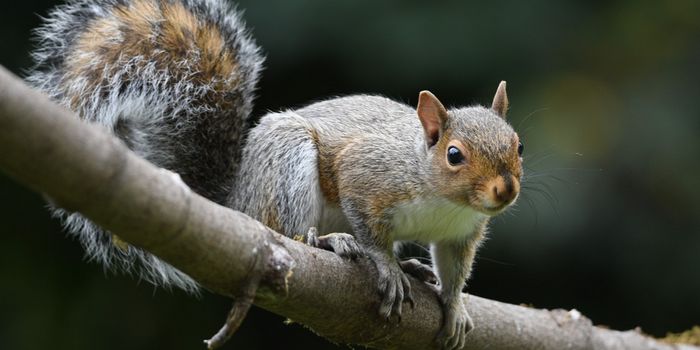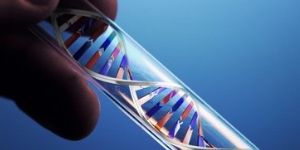Health & Medicine
OGT to sell Cytocell products direct in North America
JUN 11, 2014 12:00 AM PDT
Share
Night of the living dead cockroach
 These days, zombies seem to be ubiquitous in popular culture, although the origin of such a creature is somewhat obscure. In a Haitian folklore, zombies appear as animated corpses raised by magic or witchcraft. It has also been proposed that zombies are living individuals who have been given some type of substance or "zombie drug" that puts them into a prolonged lethargic coma. In both cases, the outcome appears to be the same: the unfortunate person who has been made into a zombie has no will of his or her own and will remain forever a slave to a witch-like sorcerer.
These days, zombies seem to be ubiquitous in popular culture, although the origin of such a creature is somewhat obscure. In a Haitian folklore, zombies appear as animated corpses raised by magic or witchcraft. It has also been proposed that zombies are living individuals who have been given some type of substance or "zombie drug" that puts them into a prolonged lethargic coma. In both cases, the outcome appears to be the same: the unfortunate person who has been made into a zombie has no will of his or her own and will remain forever a slave to a witch-like sorcerer.Wade Davis, a Harvard ethnobotanist gave some scientific credibility to the zombie-drug theory. In a 1983 paper published in the Journal of Ethnopharmacology, Davis proposed that a living person could be turned into a zombie though introduction of special powders introduced into the bloodstream. These powders consistently contained forms or tetrodoxins, potent neurotoxins found in the flesh of pufferfish capable of inducing the zombie-like state.
It turns out that the parasitic emerald wasp (Ampulex compressa) uses a zombie-drug strategy in its gruesome relationship with the common household cockroach (Periplaneta Americana)-with a little vampire thrown in for good measure.
Here's how the relationship unfolds.
Most parasitic insects that paralyze their victims in place with a venomous sting. The emerald wasp essentially turns it into a zombie slave. After two stings from the wasp, the cockroach can still walk, but can no longer initiate its own movement. Hungry and exhausted by delivering the stings, the wasp regains its energy by cutting off the ends of the cockroach's antennae and drinking the blood.
Fully refreshed, the wasp then latches on to the cockroach and leads it away to its lair where the wasp lays an egg on its abdomen. After 3 or 4 days the larva hatches and chews its way into the abdomen. Once inside, the larva eats the cockroach's internal organs in a precise order that ensures that the now docile victim will stay alive long enough to sustain the larva while it builds a cocoon, which will eventually hatch, releasing a fully grown wasp.
Through the entire process, the "zombified" roach, although able to move, shows no desire to struggle, flee, or fight-even as it is being eaten alive from the inside.
So, how does the wasp's 2-sting strategy work?
This wasp-cockroach relationship has been studied since the 1940s, but only recently have scientists understood how the wasp stings work, thanks largely to the work of Frederic Libersat and his colleagues at Ben Gurion University.
The first wasp sting contains large quantities of the neurotransmitter gamma amino butyric acid (GABA), which is delivered along with taurine and beta alanine to a mass of nerve tissue in the cockroach's thorax. This combination temporarily paralyses the cockroach's front legs and prevents it from escaping while the wasp inflicts the second sting.
The second sting contains what Libersat and his colleagues refer to as a "neurotoxic cocktail". This is the sting that turns the cockroach into a zombie. Its venom blocks the receptors for another neurotransmitter called octopamine, which is involved in the initiation of spontaneous and complex movements such as walking. This explains why the second sting causes the cockroach to enter a hypokinetic state characterized by little, if any spontaneous locomotor activity. Libersat has shown that unstung cockroaches injected with an octopamine-like compound show an increase in spontaneous walking behavior.
Whereas cockroaches injected with a chemical that blocks octopamine, like the one present in the second wasp sting, show a reduction in spontaneous walking, effectively turning them into zombies.
You have to admire this ingenious evolutionary adaptation by the wasp. The stung cockroaches are capable of walking to the wasp's nest, but they can only walk there when led by the wasp as if they had no "will" of their own. If the wasp paralyzed the cockroach in place, it would not be able to carry it off to its lair. By being able to lead the stunned cockroach to its den under its own power, the wasp gains a new nursery and a fresh source of readily available food for its larva.
REFERENCES:
1. Davis EW. The ethnobiology of the Haitian zombi. J Ethnopharmacol. 1983 Nov;9(1):85-104.
2. Rosenberg LA, Glusman JG, Libersat F. Octopamine partially restores walking in hypokinetic cockroaches stung by the parasitoid wasp Ampulex compressa. J Exp Biol. 2007 Dec;210(Pt 24):4411-7.
You May Also Like
Loading Comments...








